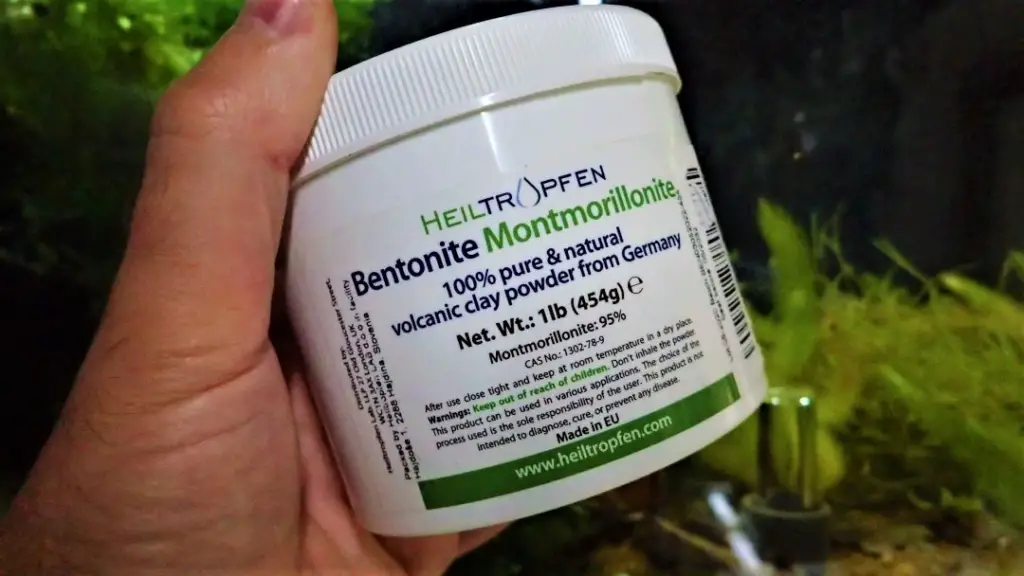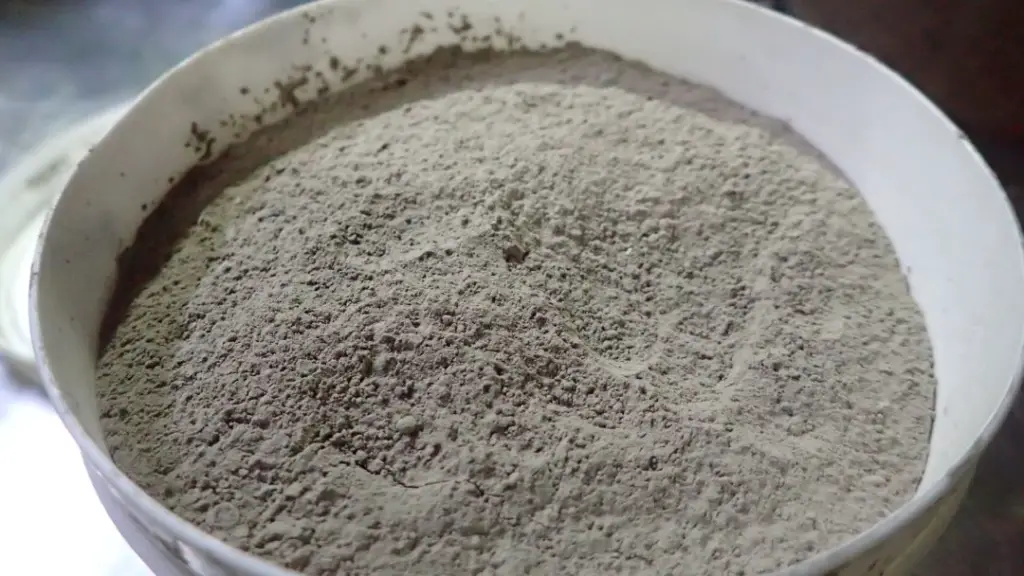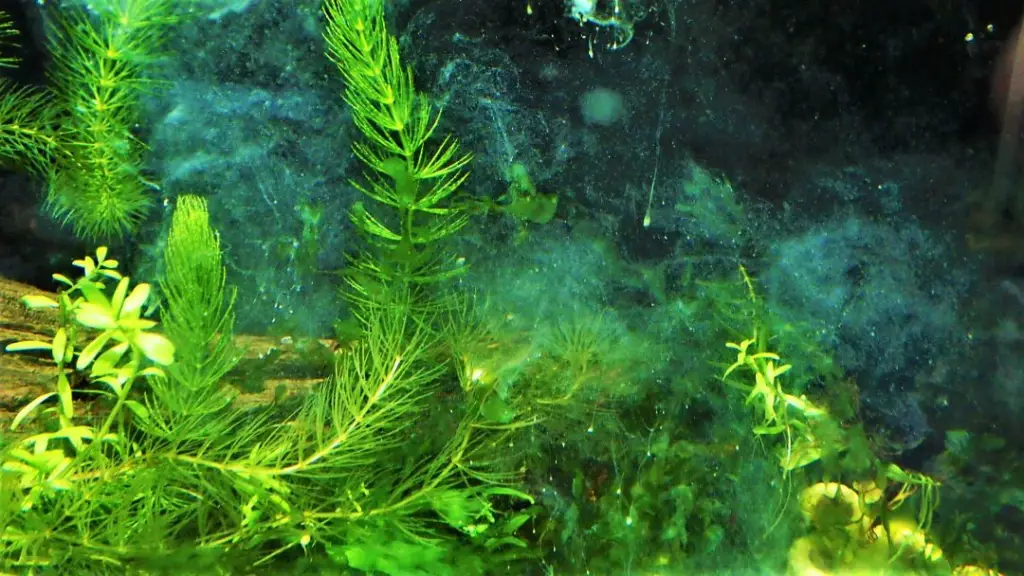Hello there, fellow shrimp enthusiasts! I’m here to share my personal journey with a fascinating substance that has transformed my shrimp keeping experience – Bentonite/Montmorillonite clay. This unassuming clay, often overlooked in the aquatic world, has proven to be a game-changer in my shrimp tanks. So, buckle up as we dive into the world of Bentonite and Montmorillonite clay, exploring its benefits and how it can enhance your shrimp keeping journey.
Remember, a thousand-mile journey begins with a single step, or in our case, a pinch of clay. Let’s embark on this exciting journey together, exploring the wonders of Bentonite/Montmorillonite clay, and how it can transform your shrimp keeping experience. After all, the best way to predict the future of your shrimp tank is to create it, and Bentonite/Montmorillonite clay might be the tool you need to do that.
Understanding Bentonite and Montmorillonite Clay: A Brief Overview
Bentonite and Montmorillonite clay are two types of absorbent aluminium phyllosilicate clay, primarily composed of minerals from the smectite group. These clays are often formed from weathering of volcanic ash in seawater. They have a unique property of expanding when wet, absorbing several times their dry mass in water. This makes them highly sought after in various industries, from construction to cosmetics, and yes, even in our beloved shrimp keeping hobby.
The terms Bentonite and Montmorillonite are sometimes used interchangeably, but there’s a subtle difference. Bentonite refers to a clay that is found in the Fort Benton region of Wyoming in the United States, while Montmorillonite is named after Montmorillon in France where it was first identified. Montmorillonite is a type of Bentonite, and it’s this specific type that we’re interested in for our shrimp tanks.
Montmorillonite clay is rich in minerals, including calcium, magnesium, potassium, and iron, among others. These minerals are beneficial for the overall health of our shrimp. The clay particles also have a high cation exchange capacity (CEC), meaning they can absorb and hold onto positively charged ions (cations) in the water. This property allows the clay to absorb toxins, heavy metals, and other harmful substances, effectively purifying the water in our shrimp tanks.
In the next sections, we’ll delve deeper into the role of Bentonite/Montmorillonite clay in shrimp keeping, its benefits for shrimp health, and how to use it in your tank. So, stay tuned as we continue our journey into the world of Bentonite/Montmorillonite clay.
The Role of Bentonite/Montmorillonite Clay in Shrimp Keeping
In the world of shrimp keeping, Bentonite/Montmorillonite clay plays a multifaceted role that goes beyond just being a substrate additive. Its unique properties and mineral content make it valuable for maintaining a healthy and thriving shrimp tank.
Water Purification
Water purification is one of the primary roles of Bentonite/Montmorillonite clay in shrimp keeping. Thanks to its high cation exchange capacity (CEC), the clay can absorb and hold onto harmful substances in the water, including toxins and heavy metals. This helps to maintain a clean and safe environment for the shrimp, reducing the risk of disease and promoting overall health.
Mineral Supplement
Bentonite/Montmorillonite clay is rich in essential minerals such as calcium, magnesium, potassium, and iron. When added to the tank, these minerals are slowly released into the water, providing a natural mineral supplement for the shrimp. These minerals are crucial for various biological processes in shrimp, including moulting, growth, and reproduction.
Enhancing Coloration
Some shrimp keepers have reported that regular use of Bentonite/Montmorillonite clay can enhance the coloration of their shrimp. While this might not be its primary role, it’s a welcome bonus for those who appreciate our shrimp’s vibrant colors.
Supporting Beneficial Bacteria
The clay also provides a large surface area for beneficial bacteria to colonize. These bacteria play a vital role in maintaining water quality by breaking down waste products and converting harmful substances into less toxic forms.
Food Source
Finally, the clay particles can serve as a food source for shrimp. Shrimp are known to graze on the clay, picking up tiny particles that have settled on the substrate. These particles not only provide the shrimp with essential minerals but also contain biofilm and microorganisms that are a natural part of the shrimp’s diet.
In summary, Bentonite/Montmorillonite clay plays a crucial role in shrimp keeping, contributing to water purification, mineral supplementation, color enhancement, bacterial support, and food provision. It’s a small addition to the tank with big benefits, making it a valuable tool in the shrimp keeper’s arsenal.

Benefits of Bentonite/Montmorillonite Clay for Shrimp Health
The use of Bentonite/Montmorillonite clay in shrimp tanks goes beyond just maintaining water quality and providing a source of food. It also has direct benefits for the health and well-being of the shrimp. Let’s delve into these benefits in more detail.
Enhanced Molting Process
Shrimp undergo a process called molting, where they shed their old exoskeleton and form a new one. This process is crucial for their growth and reproduction. The minerals present in Bentonite/Montmorillonite clay, particularly calcium and magnesium, play a vital role in the formation of the shrimp’s exoskeleton. By providing a natural source of these minerals, the clay can help to support the molting process and reduce the risk of molting issues.
Improved Coloration
While not a health benefit per se, improved coloration is often a sign of a healthy and well-nourished shrimp. Some shrimp keepers have reported enhanced coloration in their shrimp with the regular use of Bentonite/Montmorillonite clay. This is likely due to the rich mineral content of the clay, which can contribute to the vibrant colors of the shrimp.
Boosted Immune System
The minerals in Bentonite/Montmorillonite clay can also help to boost the shrimp’s immune system. A strong immune system is crucial for the shrimp to fight off diseases and cope with stress. By providing a natural source of essential minerals, the clay can contribute to a robust immune system and overall better health.
Increased Longevity
While more research is needed in this area, some shrimp keepers have reported increased longevity in their shrimp using Bentonite/Montmorillonite clay. This could be due to the combined effects of improved water quality, enhanced molting, and a boosted immune system.
Better Breeding Success
Lastly, the clay can contribute to better breeding success. The minerals it provides are crucial not only for the growth and health of the adult shrimp but also for the development of the eggs and the health of the baby shrimp.
In conclusion, Bentonite/Montmorillonite clay offers a range of health benefits for shrimp, from supporting the moulting process and boosting the immune system to enhancing coloration and contributing to better breeding success. It’s a simple addition to the tank that can make a big difference in the health and well-being of your shrimp.

Impact of Bentonite/Montmorillonite Clay on Water Quality
Maintaining optimal water quality is paramount in shrimp keeping. The health, growth, and reproduction of shrimp are directly influenced by the conditions of their aquatic environment. Bentonite/Montmorillonite clay can play a significant role in enhancing water quality in several ways.
Absorption of Toxins and Heavy Metals
Bentonite/Montmorillonite clay has a high cation exchange capacity (CEC), which allows it to absorb and hold onto harmful substances in the water. These substances can include toxins and heavy metals that are detrimental to shrimp health. By absorbing these harmful substances, the clay helps to purify the water and create a safer environment for the shrimp.
Stabilization of pH and Hardness
The clay can also help stabilize the water’s pH and hardness. It can buffer the water to prevent drastic pH swings, which can be stressful for the shrimp. Additionally, the minerals in the clay can contribute to the water’s general hardness (GH), which is essential for shrimp health and molting.
Enhancement of Water Clarity
Bentonite/Montmorillonite clay can enhance water clarity by binding small particles in the water, causing them to settle to the bottom. This can result in clearer water, which not only improves the aesthetics of the tank but can also enhance the efficiency of light penetration, benefiting any live plants in the tank.
Support of Beneficial Bacteria
The clay provides a large surface area for beneficial bacteria to colonize. These bacteria play a crucial role in the nitrogen cycle, converting harmful substances like ammonia and nitrite into less toxic nitrate. By supporting these beneficial bacteria, the clay contributes to the tank’s biological filtration and the water parameters’ overall stability.

Dosage and Application: How to Use Bentonite/Montmorillonite Clay in Your Tank
Incorporating Bentonite/Montmorillonite clay into your shrimp tank is straightforward, but getting the dosage and application right to reap its full benefits is important. Here’s a step-by-step guide on how to use this beneficial clay in your tank.
Dosage
The dosage of Bentonite/Montmorillonite clay can vary depending on the size of your tank and the specific needs of your shrimp. However, a general guideline is to start with a small amount and gradually increase it as needed. For a typical 10-gallon tank, starting with a pinch (about 1/8 of a teaspoon) once a week is a good starting point.
Application
To apply the clay, sprinkle the measured amount directly into the tank. The clay will initially cloud the water as it disperses, but it will soon settle, and the water will clear up. The shrimp will be seen picking at the clay particles, and over time, the clay will slowly release its beneficial minerals into the water.
Monitoring and Adjustments
After adding the clay, monitor your shrimp and water parameters closely. You can gradually increase the dosage if you notice positive changes in your shrimp’s behavior, health, or coloration. However, if you observe any adverse effects, reduce the dosage or frequency of application. Remember, every tank is unique, and what works for one might not work for another.
Precautions
While Bentonite/Montmorillonite clay is generally safe for use in shrimp tanks, it’s important to source it from a reputable supplier to ensure it’s free from contaminants. Also, avoid overuse as excessive amounts of clay can lead to water cloudiness and potential issues with your filtration system.
In conclusion, using Bentonite/Montmorillonite clay in your shrimp tank is a simple and effective way to enhance water quality and shrimp health. By starting with a small dosage and adjusting as needed, you can optimize the benefits of this beneficial clay for your shrimp.
Conclusion
Bentonite/Montmorillonite clay has emerged as a valuable tool in the world of shrimp keeping. Its unique properties and rich mineral content contribute to water purification, shrimp health, and overall tank stability. By understanding its benefits and using it properly, you can leverage this natural resource to enhance your shrimp keeping experience.
Remember, every shrimp tank is unique, and what works for one may not work for another. Start with small doses, closely monitor your shrimp and water parameters, and adjust as needed. With patience and observation, you’ll find the right balance that works for your tank.
If you need help or have questions about using Bentonite/Montmorillonite clay in your shrimp tank, please don’t hesitate to contact me. I’m here to help you on your shrimp keeping journey.
Happy Shrimp Keeping!
Frequently Asked Questions
Q: Can I use Bentonite/Montmorillonite clay in a tank with fish?
A: Yes, Bentonite/Montmorillonite clay can be used in a tank with fish. The clay helps improve water quality by absorbing toxins and heavy metals, which benefits all aquatic life, including fish. However, as with shrimp, it’s important to start with a small dose and monitor your fish’s behavior and health closely.
Q: How often should I add Bentonite/Montmorillonite clay to my shrimp tank?
A: The frequency of adding Bentonite/Montmorillonite clay to your shrimp tank can vary depending on the size of your tank and the specific needs of your shrimp. A good starting point is to add a small amount, such as a pinch, once a week. Monitor your shrimp and water parameters closely and adjust the frequency as needed.
Q: Will Bentonite/Montmorillonite clay cloud my tank water?
A: Initially, when you add Bentonite/Montmorillonite clay to your tank, it may cause the water to become cloudy. However, this cloudiness is temporary and will clear up as the clay particles settle.
Q: Can I use Bentonite/Montmorillonite clay with other water conditioners?
A: Yes, Bentonite/Montmorillonite clay can be used in conjunction with other water conditioners. However, it’s important to monitor your water parameters closely to ensure that the combined use of these products does not lead to any imbalances in your water chemistry.
Q: Is Bentonite/Montmorillonite clay safe for all types of shrimp?
A: Bentonite/Montmorillonite clay is generally safe for all types of shrimp. However, as with any new addition to your tank, it’s important to introduce the clay gradually and monitor your shrimp closely for any changes in behavior or health.
